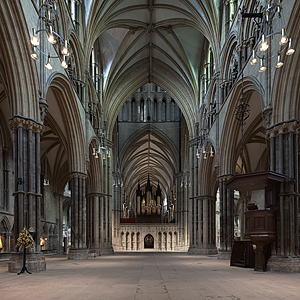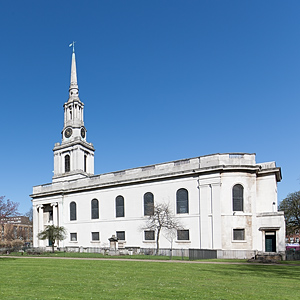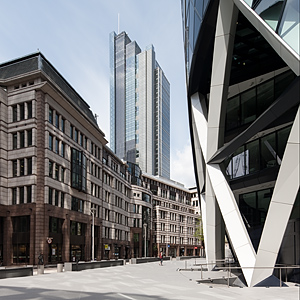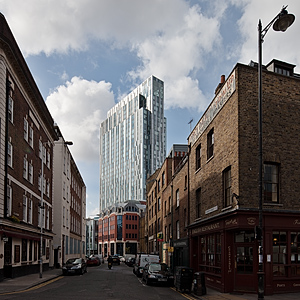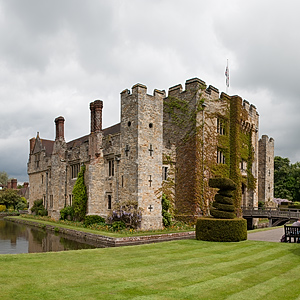What are Tilt-Shift lenses?
Tilt-Shift lenses are specially designed to allow the control of both the plane of focus and which part of the image circle is displayed and form a standard part of the Equipment that I use. The Plane of Focus isn't usually manipulated in conjunction with verified view photo-montages as it makes adding the CGI building much more difficult. In most cases we leave the plane of focus where it is for "normal" lenses, parallel to the film plane. What is used is the ability to see a different part of the image circle. The image circle is the image that the lens projects onto the sensor/film. For most normal lenses the image circle is only slightly larger than the film/sensor, Tilt-Shift lenses create an image circle that is much larger than the film size and give you the ability to move it relative to the film/sensor.
And what are they good for?
If you stand in front of a tall building with a normal lens you have to tilt the camera up so that you can include the top of the building. This causes the vertical lines (walls, windows, columns etc) to converge creating an effect called keystoning. If you have to use normal lenses for architectural images you can correct them in Post-processing to remove the keystoning. The problems with this type of workflow are that when you stretch the top of the image to make the walls parallel you also need to increase the height of the image as well. Getting the walls vertical is easy but how much height do you add? As it's not obvious how much to add your final image can be hard to verify. The other problem is that you are stretching the pixels near the top of the image which can give a smeared look to the clouds.
Tilt-Shift lens examples
The first image shows Chiswick House taken with a Tilt-Shift lens and no shift applied to the lens. This is the view you would get with a normal lens which either crops the top of the building or places it too close to the top of the frame. The second image shows what happens when you tilt the camera up to improve the composition and include the chimneys and dome, keystoning appears and the walls and columns converge. The third image shows how a Tilt-Shift lens fixes these problems and allows a nice composition balancing sky and foreground without suffering from keystoning. The following images are other examples of images produced using Tilt-Shift lenses.
Tilt-Shift Images
Interested in learning more?
If you've looked through my site and have any questions, I'd be glad to help you. You can contact me on my mobile on 07801 103635 or send me an E-mail and I will get back to you as soon as I can.





